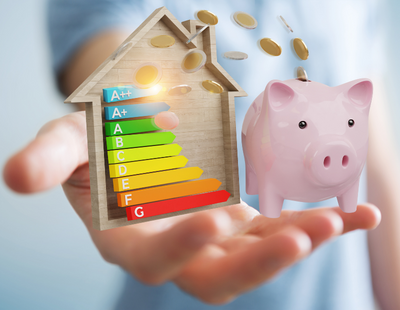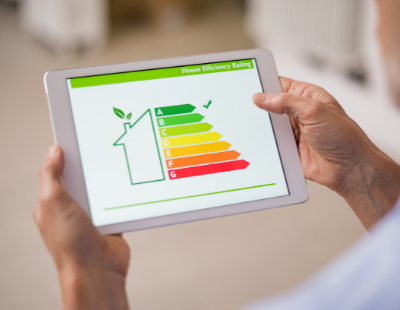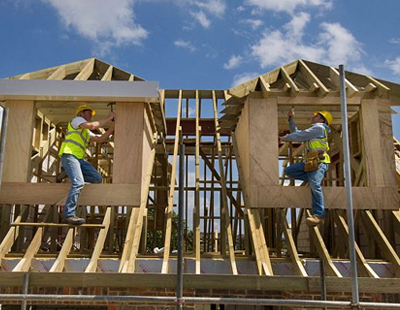These include things like getting a smart meter to measure energy use. Although everyone contributes to the cost of installing the meter through their energy bills, you don’t have to pay anything upfront to make the switch. Once you have one, you can immediately save money by looking at how much you’re spending on different appliances and where you might be wasting energy.
For little or no financial outlay, you may be able to save hundreds of pounds off your energy bills over the course of a year by:
- Turning off appliances at the socket at night instead of leaving them on standby, e.g. TVs
- Turning your thermostat down, even by just a couple of degrees
- Using electric blankets either instead of or to top up the heating
- Closing curtains at sundown
- Using a slow cooker instead of putting the oven on
Small cost changes
Investment in things like energy-efficient light bulbs, draught excluders, heavy lined curtains, chimney balloons and easy-to-fit window insulation can cost a few hundred pounds and save the equivalent in the first year, so these are small changes you can make that should pay back within a year or so.
For example, switching bulbs to LEDs can save up to £65 a year*; if you have an open fire, a chimney balloon could save up to £90 a year; adding window film as secondary glazing could save up to £45 a year.
*Savings based on a typical gas-heated three-bedroom semi-detached home with a gas tariff of 10.3p/kWh and electricity tariff of 34p/kWh. Energy Saving Trust, correct as of October 2022.
Of course, you have to spend a little to save a little in this case, but these changes can benefit you in two ways:
1. Reduce energy bills
2. If you are selling or letting the property, these changes could boost your EPC rating, which can improve the rent or price you secure for your home.
Larger investments in energy efficiency
Spending thousands of pounds on energy-saving measures such as a new boiler, a heat pump, insulation, double or triple-glazed windows, and solar panels would be very easy.
However, these can take time to pay back and may even never do so. Specific measures might not suit your home or even be possible to do, especially if you’re in a conservation area or have a listed building. As such, it’s vital that, before you spend any money, you have an expert energy assessor or surveyor check out the changes you are planning and determine whether they’re appropriate for your specific property and its construction.
Here are some of the quoted ‘payback’ scenarios for energy efficiency measures:
Insulation
This can be in the roof or loft, walls and floors. To keep costs down, installing insulation at the point of building or renovating a home is ideal. Prices can vary from just under £400 through to £1,800, depending on the size and makeup of the property. According to the Energy Saving Trust “whether you live in a large detached house or small flat, you should be able to make back the installation cost in five years or less due to the yearly energy bill savings you will make.”
New boiler
Although a new boiler system can cost thousands of pounds to install, especially if you need to change pipework or fit new radiators, it can be cost-effective versus other energy-efficient ways of heating a home, such as via a heat pump.
And a new boiler could help upgrade your home to an EPC rating of C or above, which could mean you not only save energy but also improve the value of your property, so your investment might pay back pretty quickly. And getting your EPC rating up into the A-C range is especially important if you are a landlord. The current belief is that a C will be the new minimum rating required to let a property from 2028.
Overall, it’s likely to cost around £4k to fit a new boiler and thermostat valves for radiators, and this should save you £250 to £450 a year suggesting a payback time of around five to 10 years - or less, depending on usage and the additional value that might be added to your home.
Boiler upgrade scheme
This is a government scheme to encourage high-efficiency heating systems, such as heat pumps or biomass boilers. They can cost tens of thousands of pounds and require a lot of space for the installation and new pipework, so they would be difficult to retrofit and may not suit terraced or small properties.
The scheme offers £5-6k off the installation cost and operates until 2025. See the Energy Saving Trust website for more information.
To work out a payback time, you will need to talk to a specialist who can give a bespoke view of your property and the system you are considering fitting.
Windows and door upgrades
According to the EST: “A set of A-rated windows for a semi-detached house will typically cost around £7,500. By installing A-rated double glazing to windows in an entirely single-glazed semi-detached gas-heated property, you could save £195 a year.”
Although the payback purely in terms of energy bill savings may be a long time, if you’re letting or planning on selling the property and the upgrade increases the capital value, you may get payback much sooner.
Solar Panels
As with the boiler upgrade scheme, understanding the investment needed and the payback of solar panels requires an expert assessment of your specific property. Some people who were early adopters of alternative energy sources have done well out of various schemes over the years. Still, this type of subsidised payback has now been significantly reduced.
The cost of solar panels can range from £6,000 to £20,000 for a large home and can take seven or more years to pay back. So it’s a significant investment and might only be something you want to do for your forever home, building the cost when you start a build, undertake renovation or buy a home.
Overall, efficiency changes that you can do to a home range from zero to tens of thousands of pounds. Whether this is right for you, the property and your budget depend on the type of property and the level of changes you are happy to make to be more energy efficient. What’s important to be aware of is that if you are planning to spend thousands of pounds, it is worth getting expert, independent advice for your particular property and circumstances so you know what costs and payback you could achieve.
Be careful; not all energy efficiency changes work!
You need to be particularly careful about two types of changes: insulating walls and spray foam insulation in a roof. Properties need to ‘breathe’; in some cases, cavity wall insulation and excessive spray foam insulation have caused serious condensation problems.
RICS has investigated both of these and explains that it’s important to (a) have an expert identify whether a particular type of insulation is the right solution and (b) use an expert that knows what they are doing for the installation.
And it’s essential to be aware that the consequences of getting this wrong are severe. If you fit spray foam insulation, it can mean your property is un-mortgageable, which is likely to greatly reduce its value as it can only be sold to a cash investor and can also affect your ability to secure equity release. Given that there are plenty of other ways to insulate your home to achieve the same effect as spray foam insulation, it’s certainly worth considering these first.









.png)



.jpg)





Join the conversation
Be the first to comment (please use the comment box below)
Please login to comment